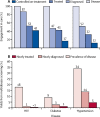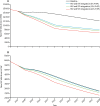Advancing global health and strengthening the HIV response in the era of the Sustainable Development Goals: the International AIDS Society-Lancet Commission
- PMID: 30032975
- PMCID: PMC6323648
- DOI: 10.1016/S0140-6736(18)31070-5
Advancing global health and strengthening the HIV response in the era of the Sustainable Development Goals: the International AIDS Society-Lancet Commission
Figures




















Comment in
-
The HIV response and global health.Lancet. 2019 Apr 27;393(10182):1695-1696. doi: 10.1016/S0140-6736(19)30355-1. Lancet. 2019. PMID: 31034373 No abstract available.
-
The HIV response and global health.Lancet. 2019 Apr 27;393(10182):1696. doi: 10.1016/S0140-6736(19)30353-8. Lancet. 2019. PMID: 31034374 No abstract available.
-
A COVID-19 conference at AIDS 2020: Virtual.Lancet. 2020 May 23;395(10237):1598-1599. doi: 10.1016/S0140-6736(20)31026-6. Epub 2020 Apr 30. Lancet. 2020. PMID: 32359401 Free PMC article. No abstract available.
References
-
- AIDSInfo Joint United Nations Programme on HIV/AIDS. http://aidsinfo.unaids.org - PubMed
-
- UN . Joint United Nations Programme on HIV/AIDS; Geneva: 2017. Ending AIDS. Progress towards the 90–90–90 targets.
Publication types
MeSH terms
Substances
Grants and funding
LinkOut - more resources
Full Text Sources
Other Literature Sources
Medical

